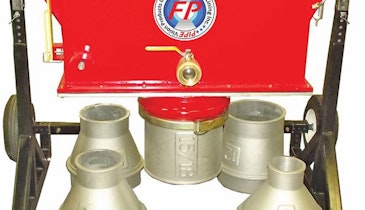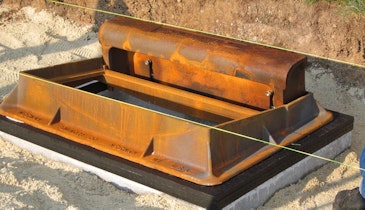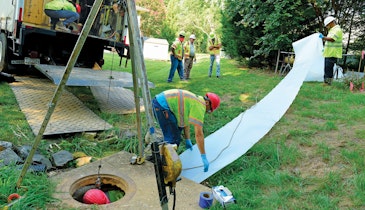To avoid a consent decree order handed down by the Environmental Protection Agency, utility owners have had to focus their attention and financial resources on resolving inflow and infiltration problems related to their sanitary sewer systems while neglecting their storm drain systems. A new trend gaining traction has asset owners taking a close look at their storm systems and esta- blishing long-range plans to address areas of concern.
One of the oldest counties in the U.S., dating back to the 1600s, has spent the last several years doing just this. While original culverts in their county were made of wood, newer technologies led to the use of steel and metal products in pipe culvert manufacturing. These products are known to deteriorate due to naturally occurring chemicals in water and soils. Many of these installations are now at the end of their life span.
One example of this challenge came to light recently during preinspections for a paving project, when staff of the county’s department of public works discovered a failing storm drain culvert measuring 200 linear feet of 72-inch corrugated metal pipe within a flood plain and natural stream. As with many CMP installations, the pipe was failing. The bottom of the pipe was deteriorated and signs of decay on other parts of the structure were present.
Open excavation of this culvert, located under 27 feet of fill embankment, would have involved removal and replacement of 15,000 cubic yards of dirt, impact to wetlands, permitting and limited ingress and egress for homeowners. The project would have taken up to nine months to permit, with construction estimated to take five weeks in normal weather conditions. The overall cost was estimated at more than $520,000.
The department of public works had experience with a variety of different pipe rehabilitation technologies. They had already determined that they wanted to use glass reinforced pipe lining that’s cured using UV light after having success with previously installing the first-in-the-nation 60-inch-diameter UV light-cured Alphaliner CIPP liner as manufactured by Reline America. The county’s staff collaborated with Pleasants Construction, a Maryland-based installer for Reline America, to plan the 72-inch-diameter lining project. This would be another first for this particular department in that they would be the first to install a 72-inch-diameter UV GRP liner by Reline America in the U.S.
Following its procurement processes, the county chose to proceed with using the Alphaliner lining solution due to its economic value, limited disturbance of soils and wetlands, delays in permitting due to open excavation and disruption to the community. Permits for the project were obtained in two weeks, with construction lasting just three days from preparation work to stabilization. The Alphaliner installation took just one day. By utilizing UV GRP lining, they saved more than 50% compared to opencut.
The Alphaliner technology allowed project completion with fewer impact to the public, the environment and the county budget.
Reline America is the only manufacturing company in North America that specializes in making both UV GRP liners and the equipment required to cure it. Being a single-source manufacturer and a highly experienced support team providing 24/7 customer support sets the company apart from the competition. With a curing unit capable of producing 24,000 watts of UV output, Reline America is not only able to cure thicker liners, but also reduce the amount of time needed to cure, saving both time and money.
276-496-4000 | info@relineamerica.com | www.relineamerica.com


